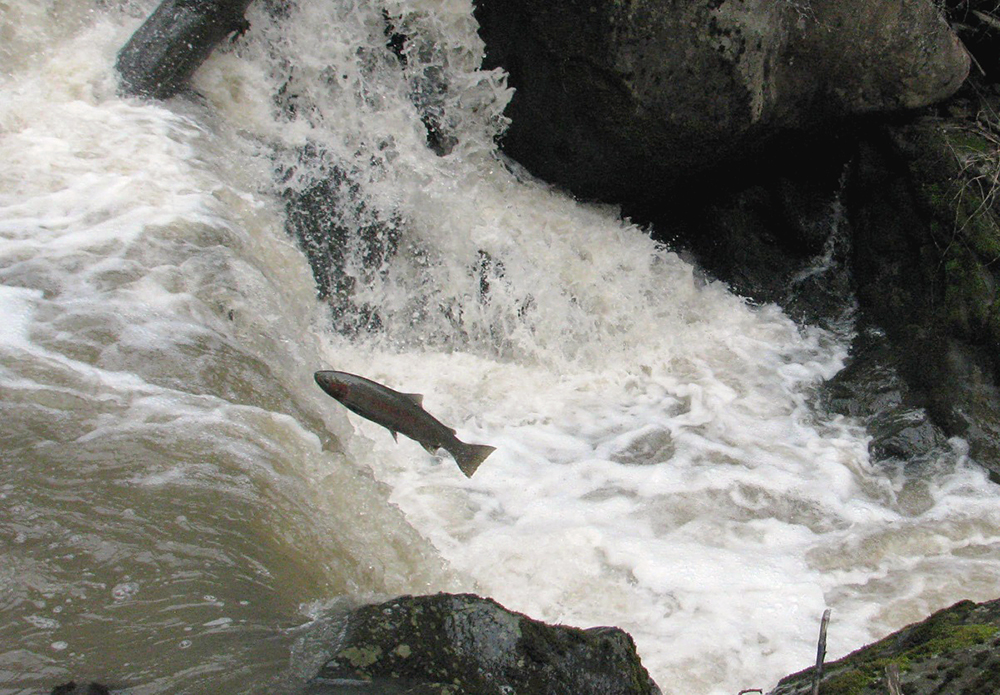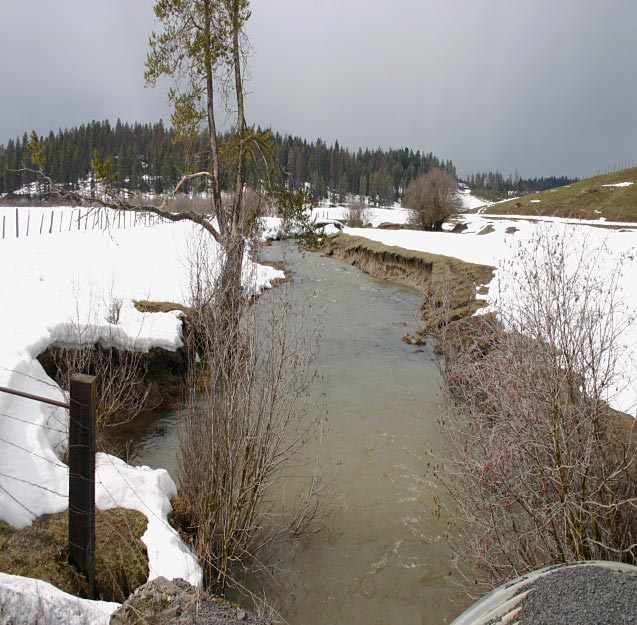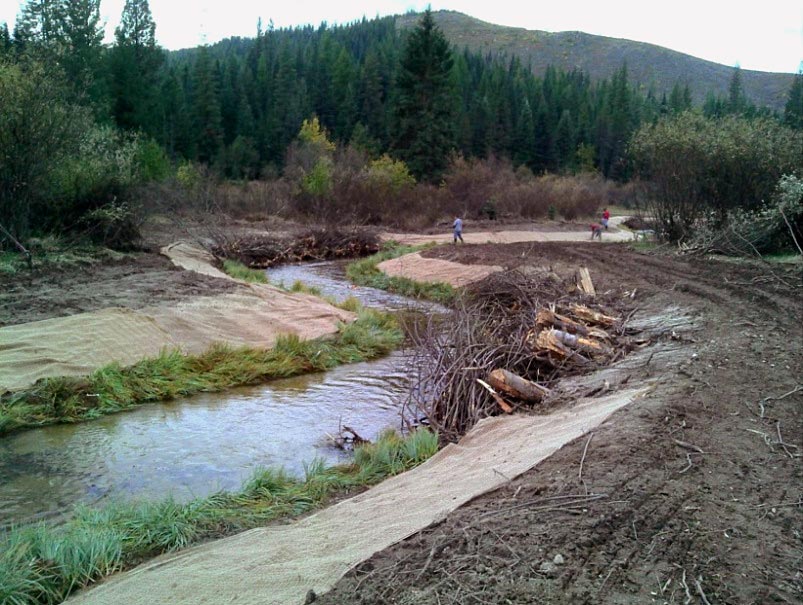
Every year, hundreds of wild steelhead swim 500 miles from the Pacific Ocean to spawn in the Potlatch River, a tributary of the Clearwater River about 15 miles upstream of Lewiston. Unfortunately, the Potlatch’s steelhead numbers are a fraction of what they once were, but Idaho Fish and Game is starting a major habitat restoration project so it can be home for more steelhead in the future.
Fish and Game biologists spent 11 years studying the Potlatch’s steelhead population to learn where the fish spawn, rear and what can be done to increase their survival.
Without willing landowners, this program would not succeed. Fortunately, landowners also want to see steelhead flourish in the Potlatch River, and they are helping in the project.
Although it will take time, effort and money to rebuild the population, there are many partners helping. Most important among them are the private land owners who control much of the area surrounding the river. Fish and Game and its partners are just getting started, but they are learning and seeing some encouraging results.
Through research, biologists believe they can rebuild steelhead by concentrating on three things:
• Increasing summer flows in stream reaches that go dry, or have very little water in them.
• Removing barriers that cut off access to historical spawning and rearing habitat.
• Restoring instream habitat to provide cover and additional rearing habitat for juvenile steelhead.
Increasing Summer Flows
One thing is for certain, steelhead need water to survive. Locals recall when families caught steelhead in streams that go nearly dry after years of habitat degradation from farming, logging, grazing and other development.
Many historic land-management practices removed water as quickly as possible, especially in the spring, so lands could be more easily farmed, grazed, and/or developed, which dried many streams that supported steelhead during the summer. Restoring summer flows in these streams can make a big difference in steelhead production.
One way to immediately increase summer low flows is to release water from an upstream reservoir. Fish and Game owns a reservoir in the headwaters of Spring Valley Creek, a tributary of Potlatch River. By releasing water during critical periods, it can maintain summer flows in a 10-mile stretch that otherwise goes mostly dry.
Biologists expect higher flows will immediately increase steelhead survival and could boost production by thousands of juveniles within the watershed. This strategy requires modifications to the reservoir to protect its values, but the fix will be inexpensive compared to the cost of other strategies used to increase summer flows.
In most of the Potlatch watershed, Fish and Game can’t duplicate that strategy because it doesn’t own storage reservoirs on every stream, so it does other things to improve streamflows, such as reconnecting floodplains, restoring native vegetation, and putting bends and oxbows back into streams that were straightened in the past.
The goal is to create a river system where the surrounding land absorbs water like a sponge during spring runoff, and then slowly releases it during summer and maintains year-round flows. These types of projects require patience because it can take years for a system to return to historical conditions.
Removing barriers
Biologists have learned that steelhead will quickly explore and reoccupy lost stream sections that are reconnected. One example is the Troy dam outside of the city of Troy, which was built in the 1930s to provide water to the city. Even though the reservoir filled with sediment within three years, it took 70 years before the dam was finally removed. But when it was gone, it only took a year before steelhead moved past the dam site and spawned in areas that were blocked for decades.
Biologists identified other barriers in the Potlatch watershed that, if removed, will immediately provide new habitat for steelhead to occupy. One example is a highway culvert on Big Meadow Creek blocking access to 10 miles of stream, and another is on Spring Valley Creek that limits access to another 10 miles of stream.
Big Bear Creek currently has a waterfall barrier, and because of changes in the upper watershed over the last century, spring flows turn the falls into a firehose that severely limits steelhead passage during spawning migration.
As these barriers are removed, steelhead will reoccupy areas that have been inaccessible for decades, which will allow young fish to spread out and reduce competition for space and food.
Restoring instream habitat
In the upper Potlatch River basin, historic timber practices and development altered tributary streams when roads and railroad grades were constructed in stream bottoms to access timber. Trees along the streams were harvested because they were often the easiest to access. Stream channels were straightened and cleared to reduce flooding of roads, pastures and buildings.
Those activities led to straightened stream channels, which removed obstructions and features that steelhead need to survive, such as shade that cools water and provides hiding cover, velocity breaks for fish to rest, different gravel and rock sizes for spawning, and habitat for insects and other food sources.
Previous studies in the Potlatch watershed showed many juvenile steelhead migrated out of the upper watershed a year earlier than normal, probably to find better habitat downstream.

Biologists are focusing these types restoration efforts in the East Fork Potlatch River watershed because they determined steelhead production in this basin is limited by a lack of channel complexity.
Projects include adding large woody material, placing streams back into their historic channel, fencing out livestock, and planting riparian vegetation. Monitoring efforts are showing increased densities of steelhead where restoration work has been done.

Fish and Game is making progress in the Potlatch River system and getting encouraging results, but none of it would be possible without cooperation from landowners, and its partners, including the Latah Soil and Water Conservation District, Bonneville Power Administration, Office of Species Conservation, Idaho Department of Lands, U.S. Forest Service, Natural Resource Conservation Service, Potlatch Corporation and Bennett Lumber.
